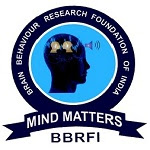Since, no norms are available for defining normal activity
level. So, what is hyperactive for one person or one age group may be quite
average for others.
Motor
over activity, restlessness inattentiveness and distractibility are the some sign
of Hyperactivity.
Hyperactivity
(according to DSM-II) describes a syndrome with the behavioral manifestations
as "Over Activity, Restlessness, Distractibility and Short Attention
Span" (APA, 1968). DSM-III renames this disorder “Attention Deficit
with Hyperactivity Disorder/ Attention Deficit Disorder” (i.e., ADHD or
ADD)".
Distractibility
is the main reason for the child being a low performer on attentional tasks as
compared to the normal child.
Any
normality or deficit must be considered in relation to the cognitive maturity of
the child. Attention deficits among ADD children may be caused by maturational
lags in memory and attention.
Children
may be impulsive in different ways and to different extends as a result of
variations, in environmental, cognitive and constitutional factors.
A
major problem is that hyperactivity is found to be associated with a number of
behavioral problems which includes aggression, conduct problem, and learning
disability.
Deficit means failure to orient, a deficit in impulse control, a
deficit in processing strategy, deficit in vigilance, and failure of sustained attention.
Different
researchers have defined the aspects of attention differently:
·
Moray (1969) has mentioned degree
of Attention, Mental Concentration, Vigilance, Set and Selective Attention
as the aspects of Attention.
·
According to Swets &
Kristofferson (1970) selective and sustained aspects are the two aspects
of attention.
·
Kahneman (1973) mentioned the selective
and Intensive aspects as the aspects of attention.
·
According to Posner & Bries
(1971) Alertness, Selectivity and Conscious processing are the main aspects
of attention.
·
Posner & Peterson (1990)
differentiate between two basic systems-anterior and posterior on the
basis of neurological data.
Note:
ADHD
children benefit from having short breaks in academic task demands. ADHD
children have been found to perform more poorly on auditory and visual
attention.
Possibly
there is also a link between attentional functions and activity level.
“Hyperactivity is caused by a desire to secure optimal
stimulation”- (Zentall, 1975)
The
normal activity level fails to stimulate the child sufficiently, and the
constant movement from one activity to another is part of this homeostatic
balance to increase environments stimulation.
By:
Subodh Kumar (B.Tech, M.Tech-CSE)
Scientist-Brain Signals Computing,
References
for image:
1. https://s.eximg.jp/expub/feed/Hnavi/2017/Hnavi_35026646/Hnavi_35026646_b-ba9c-d3bf14274f3al_1.png
2. http://s2.dmcdn.net/EbRA8/1280x720-Lqn.jpg
3. http://docplayer.org/docs-images/70/63900173/images/14-0.jpg
1. https://s.eximg.jp/expub/feed/Hnavi/2017/Hnavi_35026646/Hnavi_35026646_b-ba9c-d3bf14274f3al_1.png
2. http://s2.dmcdn.net/EbRA8/1280x720-Lqn.jpg
3. http://docplayer.org/docs-images/70/63900173/images/14-0.jpg




Comments
Post a Comment